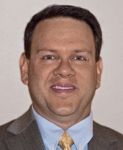- Revenue Cycle Management
- COVID-19
- Reimbursement
- Diabetes Awareness Month
- Risk Management
- Patient Retention
- Staffing
- Medical Economics® 100th Anniversary
- Coding and documentation
- Business of Endocrinology
- Telehealth
- Physicians Financial News
- Cybersecurity
- Cardiovascular Clinical Consult
- Locum Tenens, brought to you by LocumLife®
- Weight Management
- Business of Women's Health
- Practice Efficiency
- Finance and Wealth
- EHRs
- Remote Patient Monitoring
- Sponsored Webinars
- Medical Technology
- Billing and collections
- Acute Pain Management
- Exclusive Content
- Value-based Care
- Business of Pediatrics
- Concierge Medicine 2.0 by Castle Connolly Private Health Partners
- Practice Growth
- Concierge Medicine
- Business of Cardiology
- Implementing the Topcon Ocular Telehealth Platform
- Malpractice
- Influenza
- Sexual Health
- Chronic Conditions
- Technology
- Legal and Policy
- Money
- Opinion
- Vaccines
- Practice Management
- Patient Relations
- Careers
The patient-centered house that technology built
The technology requirements to be recognized as a PCMH now closely mirror those needed to prove "meaningful use" of health information technology under the new healthcare legislation.

Key Points

Accomplishing meaningful use means securing up to $44,000 in incentive funds from the federal government. It also means aligning your practice with the parameters needed to become recognized as a medical home.
The organizations that created the standards and methods for recognizing PCMHs recently worked with the federal government to align the two agendas. Thus, the technology needed to accomplish meaningful use (e.g., e-prescribing, electronic medical records [EMRs], patient registry, evidence-based diagnostic tools, electronic claims processing) is, for the most part, the same technology needed to become a PCMH. This way, PCPs can simultaneously accomplish both goals without breaking the bank. This makes 2011 the best year to go electronic!

"Physicians need to think of it as a journey they're likely already on," Waldren says. "There are many aspects of the medical home that they're doing just by being a good primary care practice. So, it's not 'we have to start all over and dump everything.' It's really-how do you continue to improve and move forward from where you're at today."
RADICAL CHANGES
As a conscientious physician, you've educated yourself on the PCMH initiative. You may have visited the Web sites of the AAFP, the American College of Physicians (ACP), the American Academy of Pediatrics (AAP), and the American Osteopathic Association (AOA). You may have read "Joint Principles of the Patient-Centered Medical Home," the basic tenants of becoming a PCMH, written in 2007 by the four primary care organizations just mentioned. You probably know that PCMHs strive to be:
You have some understanding of the scrutiny your practice will be under during your journey to becoming a PCMH. However, you might not be fully aware of the radical changes that will take place in your practice, nor the extent to which technology will play a role in your becoming a recognized PCMH.
